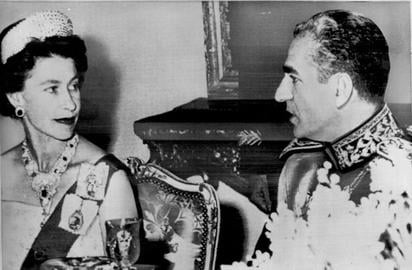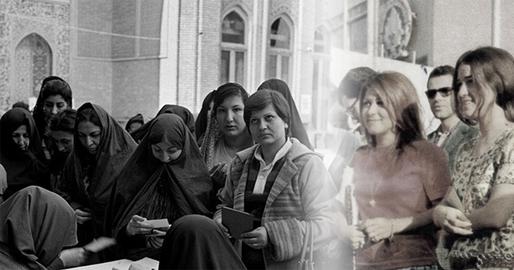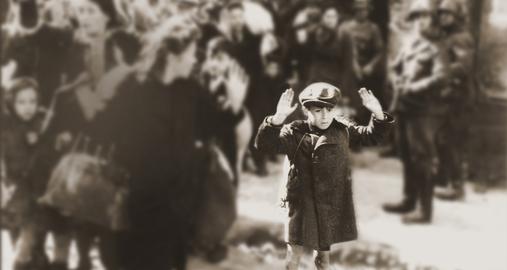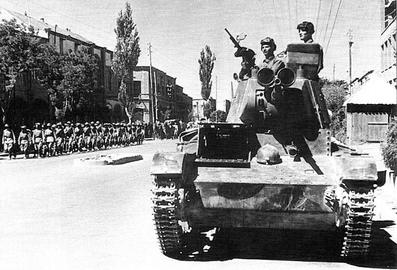Should Iranian history be allowed to be butchered by uninformed foreign sources? Darioush Bayandor, author of Iran and the CIA: the Fall of Mosaddeq Revisited, poses that question about the new British Channel Four documentary The Queen and the Coup.
I watched the Cormac-Aldrich documentary, {{ __192374_videocomponent__video component__ }}">The Queen and the Coup, broadcast on June 14 on Britain's Channel Four, attentively twice. My reaction after the first viewing was that the documentary had more chaff than wheat! After a more careful screening the next day I felt it came close to an unintended charade.
Let me explain. The opening archive footage and that of the prologue – accompanied helter-skelter by a not-always-accurate narrative – should be regarded as chaff. These accounts, including the British subversive plan Operation Boot, are well known in the literature. The essential part of the documentary is related to a presumptive message from Queen Elizabeth, transmitted by the US embassy in London to Washington and Tehran on February 27, 1953 in relation to the Shah’s intended departure abroad. The presumptive message was intended to dissuade the Shah from leaving.
Much in the earlier parts of the documentary revolves around the importance of the Queen’s unprecedented move and its tectonic longer-term impact. But once the subsequent discovery of another archive document debunks the earlier scoop, the authors insist that it was because of that same apocryphal message, unknowingly conveyed to the Shah by the American ambassador, Loy Henderson, that the Iranian monarch decided, in extremis, to renounce his departure plan, a decision that according to the authors changed the course of history, and the reverberations of which are being felt up to the present day.
According to the authors, it is immaterial where the message had come from. The perception by the Shah that it had come from the Queen induced him to change his departure plan with the result that the derailed Operation Boot came back to life, leading to the overthrow of Prime Minister Mohammad Mosaddegh in August.
The enormity of the contention calls for a closer probe. The whole narrative is based on a US archive document dated February 28, 1953 [9 Esfand 1332 in the Iranian calendar], which contains the report of Henderson’s frantic diplomatic efforts on that day to dissuade the Shah from leaving Iran. The document is far from being a new discovery. It was first released in 1989 in the Foreign Relations of the United States (FRUS) series 1951-1954 [Volume X, Iran pp.685-6] and its unredacted version was reprinted in the 2017 supplement of the same FRUS volume.
Paragraph three of this file contains the gist of Henderson’s discussion with the Court Minister Hossein Ala (a close confidant of the Shah) on the morning of the 28th. The key passage in this paragraph, on which the film's authors’ contention is ground, reads:
I also asked him [Ala] [to] tell [the] Shah that I had just received [a] message indicating that [a] very important personage for whom Shah had most friendly feelings had also expressed sincere hope that Shah could be dissuaded from leaving country.
No name was mentioned but one could surmise that the personage in question was meant to be the Queen.
In effect late evening on the 27th a cable from the United States embassy in London had relayed a message from Foreign Secretary Anthony Eden – then traveling onboard the Queen Elizabeth vessel – to express concern over the departure of the Shah but the name of the ship and the identity of the British monarch were mixed up to create confusion.
There is no evidence whatsoever that the US Department of State ever instructed Henderson to make any demarche aimed at preventing the Shah’s departure even after receiving what initially appeared to be a message from the Queen. The attitude of the Department was somewhat fatalistic; in a cable to Henderson on February 27, we read:
Department sees little which [measure] could usefully [be taken] to prevent [the] Shah’s departure. We are currently assessing significance this crisis and developments likely flow from Shah’s departure...
164. Telegram From the Department of State to the Embassy in Iran
It was Henderson who took things into his own hands; in his report of February 28 to Washington, he wrote:
I decided this morning that since news [the Shah’s departure] was now out I was more free [sic] than hitherto to try to effect cancellation or at least postponement Shah’s plans leave country.
166. Telegram From the Embassy in Iran to the Department of State
Accordingly, Henderson spoke to Ala, had a telephone conversation with the Shah, then went to see Mosaddegh.
Here is the heart of the matter: While the documentary emphatically claims that the Shah’s change of plans resulted from the presumptive message from the Queen, it fails to make any reference to the substance of the telephone conversation between the Shah and Ambassador Henderson, detailed in paragraph four of the same cable! In other words, the authors remain mute about the Shah’s emphatically negative reaction to Henderson’s passionate plea, even after Henderson informed him about the view of the mysterious personage; the passage about the latter reads:
In [an] indirect way I gave him [the Shah] [to] understand [the] views regarding his departure of [the] person referred to in reference telegram [presumably the Queen].” Henderson goes on to report, “[the] Shah expressed appreciation, but insisted [that] he must go... He said he wished to thank US Government and myself personally for friendship and support. He would now (rpt now) bid me farewell. He hoped and expected to return [emphasis in the original text].
Clearly the reasons for the Shah’s change of plan in effect were unrelated to Henderson’s demarche and the advice he had presumably received from Buckingham Palace or Washington. Rather, it had to do with the frenetic moves by the opposition to Mosaddegh after a senior court official (Hormoz Pirnia) sounded the alarms in the morning of February 28, resulting in the intervention by high clerics (Ayatollahs Boroujerdi and Behbahani), the Speaker of the Lower House (Abol-Ghasem Kashani), a parliamentary delegation going to the palace and – last but not least – the pro-Shah crowds hurriedly assembled by top clerics to prevent his departure. Minute details of these developments are documented in my 2010 book Iran and the CIA: the Fall of Mosaddeq Revisited (pp. 76-77).
Finally, it is wrong to assume, as does the documentary, that the joint planning for the overthrow of Mosaddegh, code-named TP-Ajax, was a consequence of the peripeteia of the February 28 crisis. In the immediate aftermath of the event the US assessment – as explained by Secretary J.F. Dulles at the 135th meeting of the National Security Council (NSC) chaired by President Eisenhower – was that the Shah was all but a burnt card and that the US should, inter alia, consider purchasing Iranian oil and give material support to the Mosaddegh regime.
It was only after Mosaddegh turned down the latest US-backed oil proposal and put an end to the tripartite oil talks on March 9, 1953 that the US decided to join hands with Britain for the overthrow of Mosaddegh. This change of mood is plainly echoed in the discussion of the NSC of March 11.
Darioush Bayandor, a former Iranian official and diplomat under the Shah, is the author of Iran and the CIA: the Fall of Mosaddeq Revisited (Palgrave,2010)
visit the accountability section
In this section of Iran Wire, you can contact the officials and launch your campaign for various problems




















comments